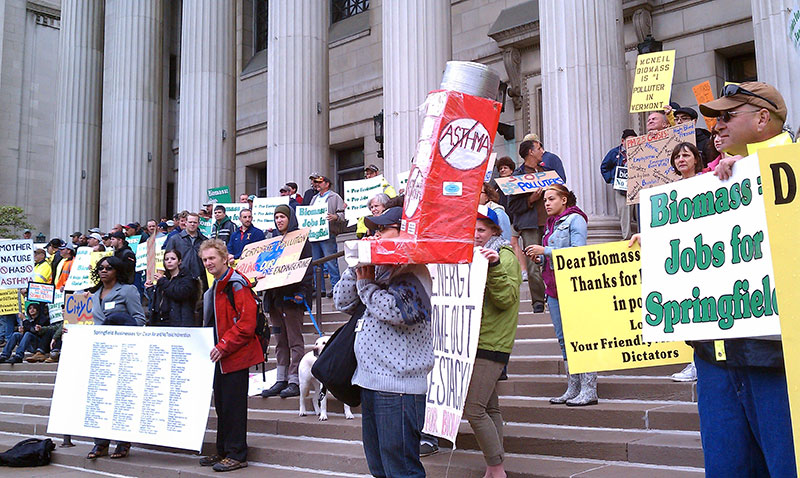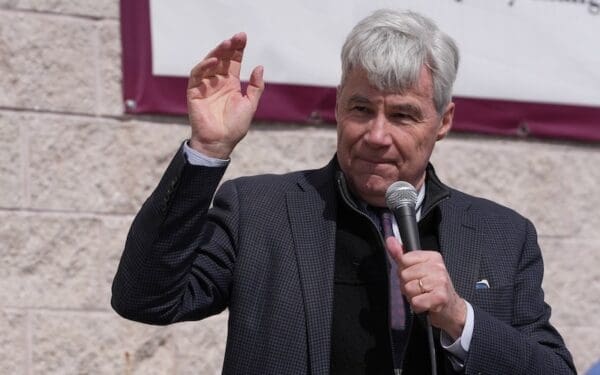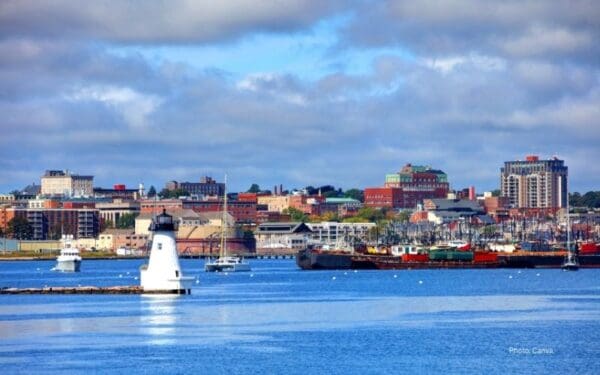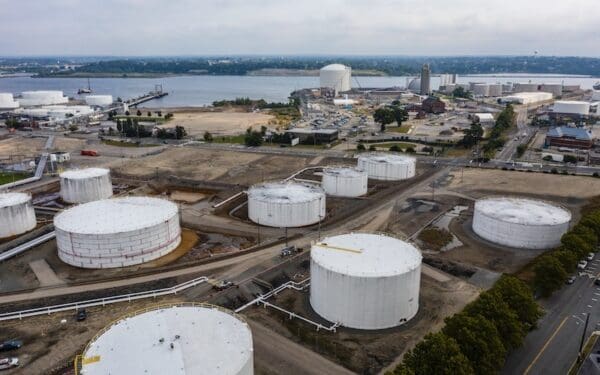
Environmental Justice Is the Common Thread through All of CLF’s Work
The City of Springfield in Western Massachusetts is known for many things – as the birthplace of both basketball and Dr. Seuss for starters, and as the home of the Big E, the biggest fair in the Northeast. But this historic city along the shores of the Connecticut River also lays claim to less celebrated distinctions, including childhood asthma rates nearly double that of other New England communities.
That’s just one reason why Michaelann Bewsee and her neighbors are fighting a biomass-fueled power plant that Palmer Renewable Energy (PRE) wants to build here. “With nearly one in five kids in Springfield living with asthma, we’ve come to the conclusion that burning anything to produce energy is a step in the wrong direction,” says Bewsee, who directs Arise for Social Justice, a local community group. “The homeowners in this neighborhood are already in tough shape because industry has been built up around them over the years, and they feel beleaguered by it.”
The plant, which recently won a court victory to reinstate a building permit denied by Springfield’s Zoning Board, would emit significant air pollution, which makes asthma worse. Adding this plant to the mix of other polluting industrial facilities in the city would further burden a community already suffering from disproportionately high rates of respiratory diseases.
Springfield is just one of many communities in New England – and across the United States – designated an environmental justice (EJ) community. EJ communities often face a confluence of both indoor and outdoor environmental stressors – air pollution, toxic land uses, lead paint, scant green space, limited public transportation, asbestos. Compounding these challenges is local residents’ lack of economic, legal, or political clout to hold polluters accountable – or to fight back against well-heeled industries seeking to site polluting facilities in their backyard.
CLF is in a unique position to be able to marshal our resources, our connections, and our tools and create a scaffolding that community-based groups can stand on to make their claims. — Veronica Eady, VP, Healthy Communities & Environmental Justice
“New Englanders living in low-income and communities of color are more deeply impacted by our current environmental challenges than society at large,” says Veronica Eady, Vice President for CLF’s Healthy Communities and Environmental Justice program. To that end, in collaboration with community groups and residents in environmental justice communities, CLF is working to reduce the environmental hazards that threaten public health and well being across the region.
The roots of CLF’s environmental justice work go back decades, from the organiza- tion’s groundbreaking success stemming childhood lead poisoning in Massachusetts in the 1990s, to its nearly 20-year effort to open much-needed service along Boston’s Fairmount commuter line for Dorchester and Mattapan residents. More recently, the closing of Salem Harbor Station and the upcoming closing of Mt. Tom Station, both coal-fired, not only benefit our climate, but the EJ neighborhoods in which they are located. “Environmental justice is a common thread running through everything that CLF does today, whether the issue is lead poisoning in New Hampshire, rising sea levels in Rhode Island, a polluting power plant in Springfield, or increasing energy costs across the region,” says Eady.
In addition to these direct efforts, environmental justice work often happens on the ground in churches, community halls, and living rooms, led by organizations like Bewsee’s Arise for Social Justice. For these small, grassroots groups, having a partner like CLF with much-needed expertise that complements their local knowledge, relationships, and support is critical to achieving measurable results. “CLF is in a unique position to be able to marshal our resources, our connections, and our tools and create a scaffolding that community-based groups can stand on to make their claims,” says Eady.
For Bewsee, that scaffolding has proved invaluable in a fight that stretches back to2008, when PRE first brought its proposal to build the biomass plant to Springfield’s City Council. “CLF was really hands on, which was amazing,” she says. “They came to city council hearings, they worked with us to appeal PRE’s state air permit both at the agency and court levels, and helped us tap into additional resources to support our fight.”
In spite of the latest court loss, Bewsee isn’t discouraged. “Bad news can make you want to fight even harder for justice,” she says. Even after six years, it’s clear that Bewsee doesn’t plan to give up the fight – and neither does CLF.
Rural Reach
It’s easy to think of environmental justice as confined to low-income urban neighborhoods. But rural communities face many of the same issues, bearing a disproportionate burden of environmental stresses. For example, when a disaster strikes, “a rural community can actually be in a worse position than an urban one,” says Vice President for Healthy Communities and Environmental Justice Veronica Eady. “For low-income people who can’t afford a car, mobility is an issue in the best of circumstances. But, in a disaster, it becomes paralyzing.” When Tropical Storm Irene slammed into Vermont and Western Massachusetts, the lack of transportation options frustrated people’s efforts to get to doctors or even the grocery store.
As CLF works to expand its environmental justice work into northern New England, Eady admits that there could be “some challenges, because communities can be so diffuse. It’s not the same as trying to do community organizing in a dense urban area.” But Eady is committed to extending the organization’s reach. “Our mission is to ensure that all New England communities – whether urban, suburban, or rural – enjoy clean air and water, that all families have access to fresh local food, and that all people have tools for making their neighborhoods more resilient in the face of our changing climate.”



